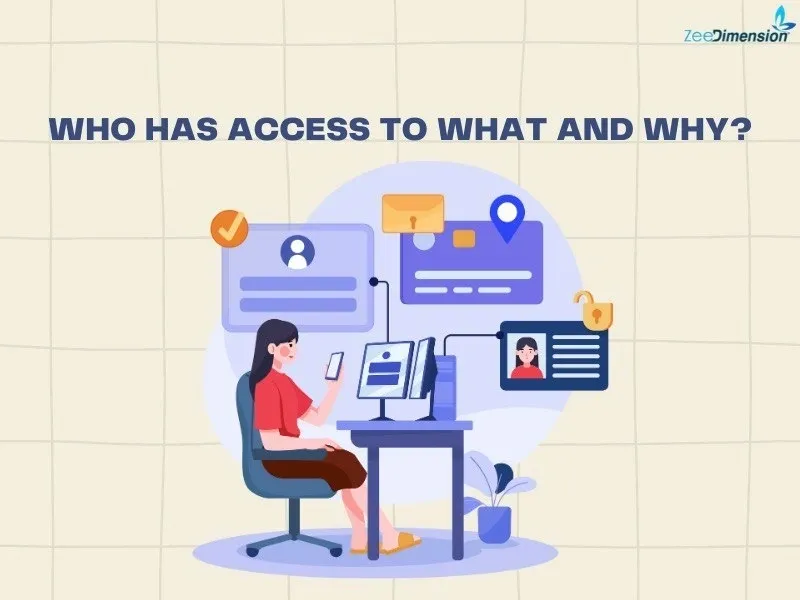
Access control is essential for organizations to protect sensitive information while enabling efficient operations. Let’s explore What is Access Control, Types and benefits of Access Control how has access, and why it matters.
What is Access Control?
One essential security feature is access control, which establishes restrictions on who can access particular files, programs, and resources as well as the circumstances in which access is allowed. By making sure that only people with permission may access sensitive data or locations, it protects systems and data against unwanted access.
What Are The 3 Types of Access Control in Security?
1- (RBAC): Role-Based Access Control
Based on organizational responsibilities, administrators can control access to particular regions by using the Role-Based Access Control (RBAC) concept. They can define roles and indicate which regions each role can access using RBAC. After roles are created, users are given a role that gives them the authority to carry out their job duties. A user can have more than one group membership, but they can only have one position active at once.
Small to medium-sized firms especially benefit from this strategy since it makes it simple for owners to decide who gets access to what regions and when.
2- (ABAC): Attribute-Based Access Control
Attribute-based access control (ABAC) offers a different approach compared to Role-Based Access Control (RBAC). ABAC utilizes multiple attributes related to both users and resources, providing administrators with greater flexibility to address evolving risks, though it may be more complex to manage. With ABAC, access to a resource is granted only if the user’s attributes align with the resource’s requirements.
These attributes can include security clearance levels, job titles, file types, or even specific locations and times of day. This method enables administrators or business owners to create adaptable security policies that align with the organization’s changing needs while maintaining a high level of security. Although setting up ABAC security policies can be more time-consuming than other access control methods, it is particularly well-suited for growing or dynamic teams.
3-(DAC): Discretionary Access Control:
is an access control model where access rights are determined by rules set by an administrator. In this system, every resource must have an owner or admin who specifies who can access it and at what level. DAC allows administrators and resource owners to assign permissions to users using an access control list (ACL).
The ACL outlines the permission levels granted to each user for various resources. This model is straightforward to understand and use, provided that users and roles are accurately listed in the ACL. Administrators or owners can easily add or remove permissions, making it simple to manage who can access specific data or sensitive areas within the organization.
While DAC gives owners full control over their system, it does require more manual updates and changes from the administrator.
6 Benefits of Access Control Security:
📷
1. Strengthened Security
To prevent unwanted access to resources, apps, data, and networks, access control acts as a robust security layer. The likelihood of malware, privilege escalation, data leaks, and other security problems is greatly reduced.
2. Enhanced Performance Efficiency
A centralized dashboard for setting and implementing security policies throughout the company is offered by access control systems. This makes providing and rescinding access easier, freeing up administrative staff time for other useful work.
3. Assist with Compliance
These solutions make it easier to comply with the many requirements that call for access controls. They also comply with the Zero Trust concept, which is a prerequisite for a lot of security systems.
4. Customized Entry
Strong access control systems enable administrators to tailor authorization and authentication rules to the unique requirements of the company. By ensuring that the least privilege principle is followed, this fine-grained control lowers the attack surface overall.
5. Records of Audits
To keep track of access events, access control systems provide comprehensive audit trails and records. Organizations can uncover policy gaps, stop possible violations, and notice anomalous conduct by keeping an eye on these events.
6. Integration with Other Tools
A coherent and efficient security architecture can be created by easily integrating access control systems with other security instruments.
Who Has Access?
-
Employees
Role-Based Access: Access is tailored to job functions, ensuring employees have what they need to perform effectively.
-
Managers
Broader Oversight: Managers need wider access to monitor performance and make informed decisions about resources and strategy.
-
IT Staff
System Maintenance: IT personnel have comprehensive access to ensure systems run smoothly and securely, identifying vulnerabilities.
-
External Stakeholders
Limited Access: Contractors and vendors may have restricted access based on project needs, requiring careful control to protect data.
-
Sensitive Data
Controlled Access: Access to PII, financial records, and proprietary information is limited to authorized personnel to prevent breaches.
-
Operational Data
Task-Specific Access: Employees can access data essential for daily tasks, streamlining processes and reducing delays.
-
Reports and Analytics
Strategic Insights: Managers access comprehensive reports to evaluate performance and make informed strategic decisions.
-
Job Functionality
Empowerment: Access enables employees to fulfill their responsibilities effectively, leading to increased productivity and satisfaction.
-
Decision-Making
Informed Leadership: Managers need access to data to analyze performance and respond effectively to challenges.
-
Compliance and Security
Data Protection: Access controls maintain data integrity and protect sensitive information, ensuring compliance with regulations.
Conclusion
Understanding access control is fundamental for balancing efficiency and security. Implementing role-based access empowers employees while protecting sensitive data.
What access control strategies have worked for your organization? Share your thoughts below!







